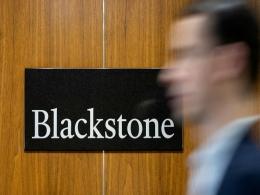Let It Be, The London Savoy Theatre’s hit show, a tribute to the British pop group, The Beatles, brings back fond memories. Listening to the hit songs ‘Strawberry Fields Forever’, ‘Abbey Road’ and ‘Penny Lane’ among singing crowds recently, reminded me that everyone has their day. While the legacy of the Beatles continues, this is not always true for corporate CEOs, who need to know when it’s time to quit.
Recent events have seen the departures of Steve Ballmer from Microsoft, Jeremy Levin from Teva Pharmaceutical and Thorsten Heins from BlackBerry and according to rumours in the City, a few others will also get their marching orders soon. When CEOs find themselves in times of trouble, they should step down and let it be. Why wait to get the push? I say we should have “tenured†based systems for CEOs similar to academia, where deans can only serve for a maximum of five years (The analogy ends there!).
Think about it. The average tenure of a Fortune 500 CEO is about 4.6 years (compared to all CEOs at 8.6). So no conflicts there. Secondly, a study by Luo, Kanuri & Andrews (How does CEO tenure matter? The mediating role of firm-employee and firm-customer relationships, 2013) suggests that long tenure can actually hurt a company’s performance. After the initial rush of enthusiasm and energy, established routines and networks can take over the drive for innovation. It concurs with previous studies on the importance of CEO succession and how new CEOs are more open, inclusive and search for new solutions (Some Organizational Consequences of CEO Succession, Miller, 1993). Yes, there are exceptions, Steve Jobs and Jack Welch to name a few. But according to Professor Luo and his team, the optimal tenure is 4.8 years. A look at the more successful CEOs, and we see that they quit while they are ahead. Angela Ahrendts’ move from Burberry to Apple is an example of what the wise ones do.
Alan Brown is another example. He recently stepped down from Rentokil Initial having turned the company around over the last five years. He comments: “I think there’s a natural cycle to most roles. If you’re the Queen, then it can be quite long, but for a mere CEO my view is that it is about six years. It’s enough time to put your ideas into action. After that it can become a cost to the business but also personally as you could be doing something more productiveâ€.
So to take some unexpected advice from the Beatles: when the night is dark and cloudy, and performance lackluster, speaking words of wisdom, let it be.
(Michael Jarrett is a Senior Affiliate Professor of Organisational Behaviour at INSEAD.)
To become a guest contributor with VCCircle, write to shrija@vccircle.com.






